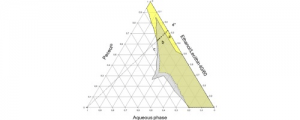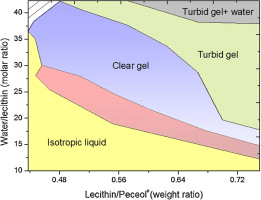Abdeslam El Ghzaoui

Abdeslam El Ghzaoui
Associate Professor, Faculty of Pharmacy, University of Montpellier
Abdeslam graduated in chemical physics at the Universtiy of Montpellier (France). After defending his PhD in the field chemical physics at the Universtiy of Montpellier (1997), he worked for the C.E.A (Commissariat à l’énergie atomique) in the field of radionuclides solubilisation in micellar and physical hydrogel systems. Then, he joined the C.R.P.P. (Centre de recherche Paul Pascal) (Bordeaux, France) as a post-doc to work on Dendrimers and their supramolecular nanostructures. In 2002, he became Associate Professor at the Faculty of Pharmacy at University of Montpellier and joined the Department of Artificial Biopolymers of IBMM of Prof. Michel Vert. His research activities focus on the rheology of nano and mesostructures biomaterials obtained from natural and synthetic biopolymers. He also works on interfaces in colloidal systems such as the drug solubilisation in polymer micelles and hydrogels.
Contact:
abdeslam.el-ghzaoui(a)umontpellier.fr
+33(0)4-11-75-96-79
5 recent publications:
A. Mouri, P. Legrand, A. El Ghzaoui, C. Dorandeu, J.-M. Devoisselle
Formulation, physicochemical characterization and stability study of lithium-loaded microemulsion system, International Journal of Pharmaceutics, 2016, 502, 117.
X. Wu, A. El Ghzaoui, and S. Li
Anisotropic Self-Assembling Micelles Prepared by the Direct Dissolution of PLA/PEG Block Copolymers with a High PEG Fraction. Langmuir, 2011, 27, 8000.
A. El Ghzaoui, F. Gauffre, A-M. Caminade, J. P. Majoral, and H. Lannibois-Drean
Self-Assembly of Water-Soluble Dendrimers into Thermoreversible Hydrogels and Macroscopic Fibers, Langmuir, 2004, 20, 9348.
Y. Kadam, C. Pochat-Bohatier, J. Sanchez, A. El Ghzaoui
Modulating Viscoelastic Properties of Physically Cross linked Self-Assembled Gelatin Hydrogels through Optimized Solvent Conditions.
Journal of dispersion science and technology, 2015, 36, 1349.
X. Wu, S. Li, A. El Ghzaoui,
Effects of stereocomplexation on the physicochemical behavior of PLA/PEG block copolymers in aqueous solution, Journal of polymer science part B-polymer physics, 2012, 50, 1352.






